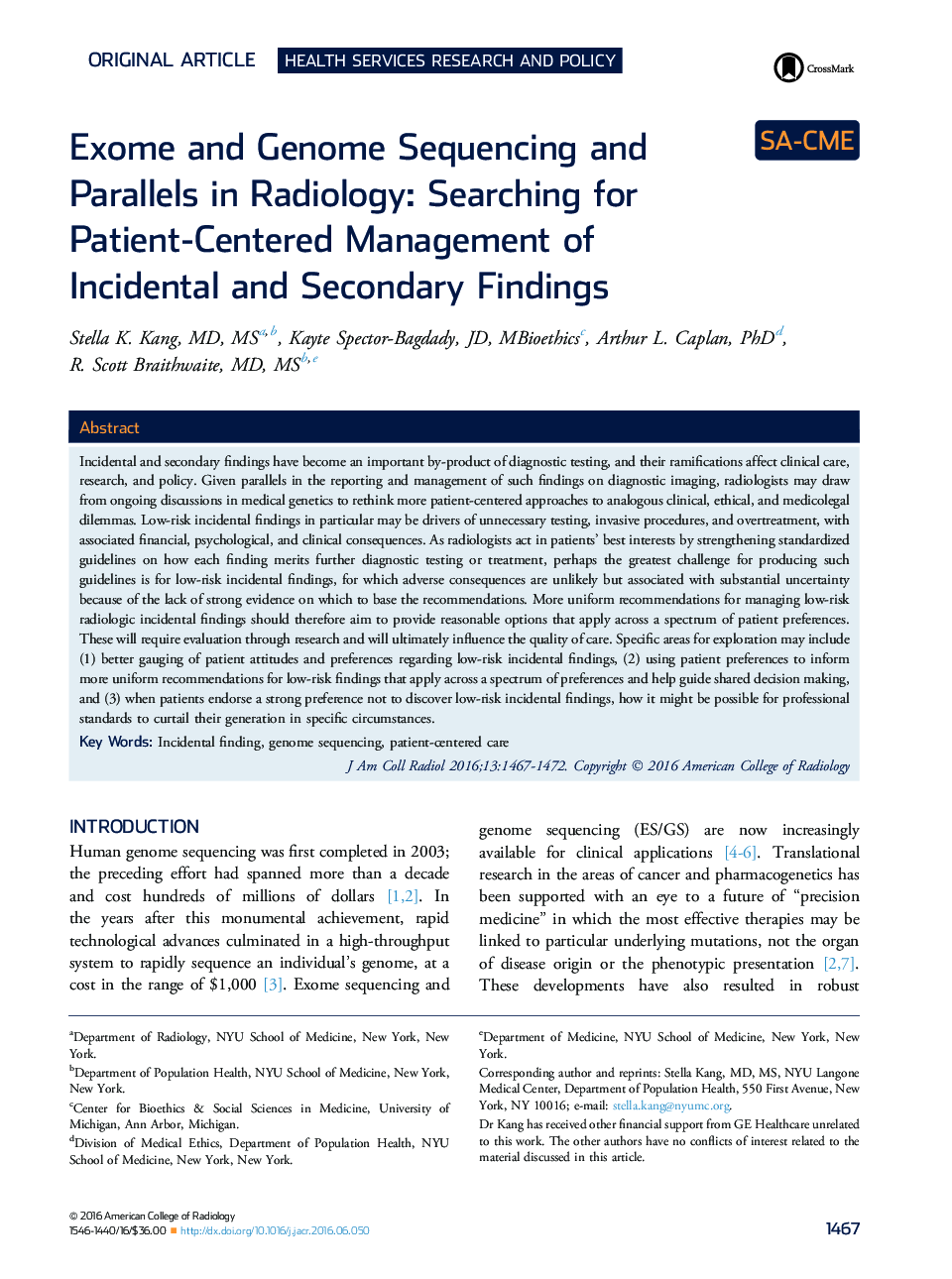| کد مقاله | کد نشریه | سال انتشار | مقاله انگلیسی | نسخه تمام متن |
|---|---|---|---|---|
| 5726588 | 1610090 | 2016 | 6 صفحه PDF | دانلود رایگان |

Incidental and secondary findings have become an important by-product of diagnostic testing, and their ramifications affect clinical care, research, and policy. Given parallels in the reporting and management of such findings on diagnostic imaging, radiologists may draw from ongoing discussions in medical genetics to rethink more patient-centered approaches to analogous clinical, ethical, and medicolegal dilemmas. Low-risk incidental findings in particular may be drivers of unnecessary testing, invasive procedures, and overtreatment, with associated financial, psychological, and clinical consequences. As radiologists act in patients' best interests by strengthening standardized guidelines on how each finding merits further diagnostic testing or treatment, perhaps the greatest challenge for producing such guidelines is for low-risk incidental findings, for which adverse consequences are unlikely but associated with substantial uncertainty because of the lack of strong evidence on which to base the recommendations. More uniform recommendations for managing low-risk radiologic incidental findings should therefore aim to provide reasonable options that apply across a spectrum of patient preferences. These will require evaluation through research and will ultimately influence the quality of care. Specific areas for exploration may include (1) better gauging of patient attitudes and preferences regarding low-risk incidental findings, (2) using patient preferences to inform more uniform recommendations for low-risk findings that apply across a spectrum of preferences and help guide shared decision making, and (3) when patients endorse a strong preference not to discover low-risk incidental findings, how it might be possible for professional standards to curtail their generation in specific circumstances.
Journal: Journal of the American College of Radiology - Volume 13, Issue 12, Part A, December 2016, Pages 1467-1472